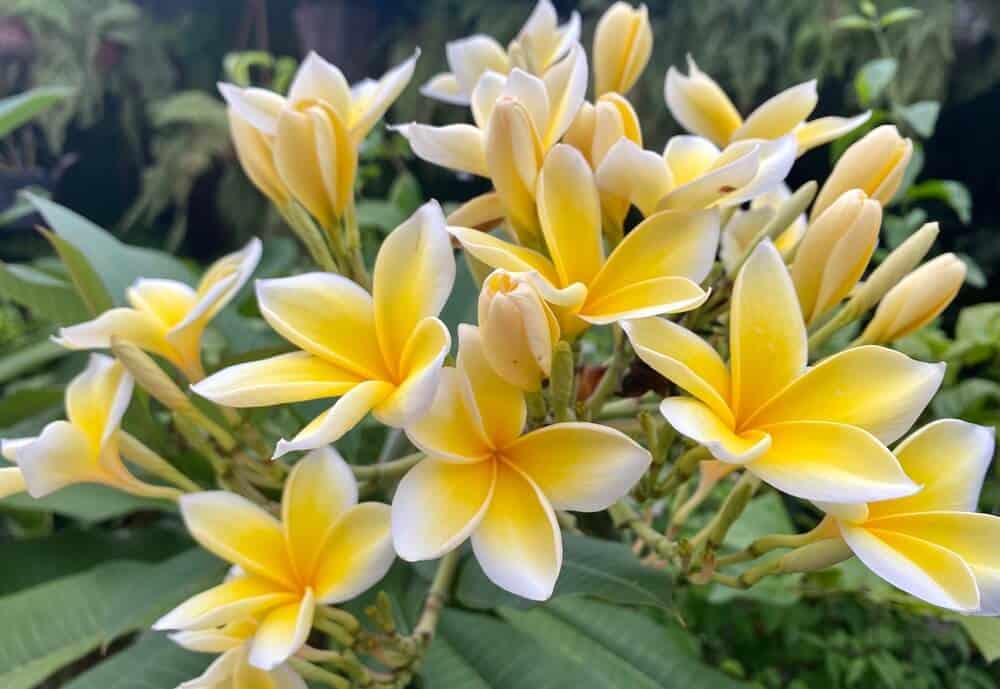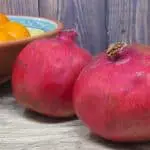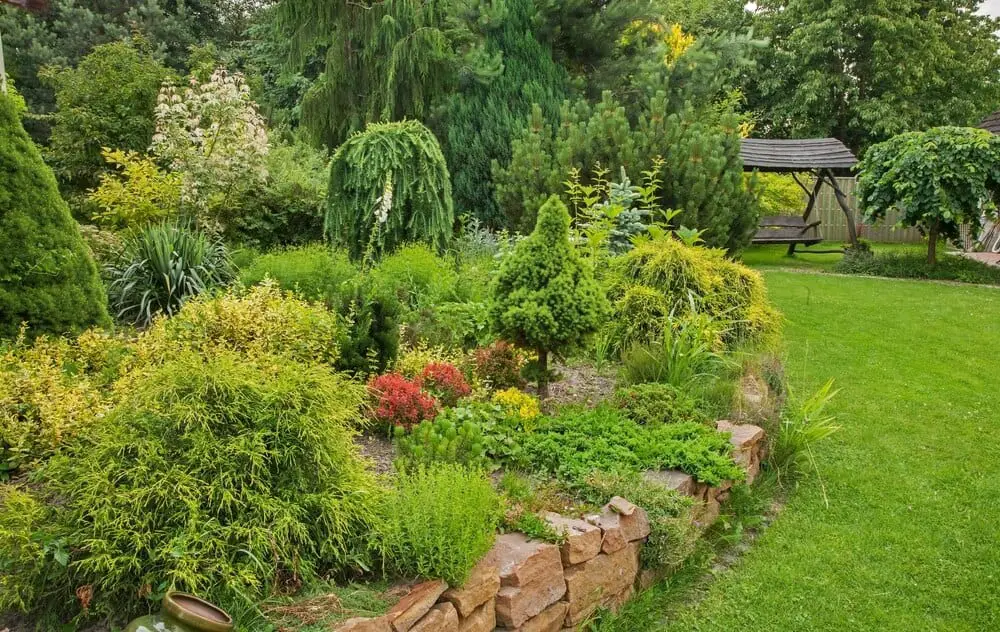Plants and flowers are beautiful and unique no matter what they do or where they grow.
Some, however, we think of as exotic, but what does that mean? Technically, exotic flowers are fascinating and sensational but are not native to the particular country they are growing.
Exotic plants tend to be extravagant with brighter colors and more giant flowers with spellbinding features.
Depending on the type of plant, and the conditions it needs, they may or may not grow in your yard naturally, but you can always use greenhouses or heat mats to simulate its preferable conditions.
If you’re a lover of exotic plants and want to give growing them a go, here are the 6 of the most exotic plants to fill your yard.
1. Red Hot Poker Flower
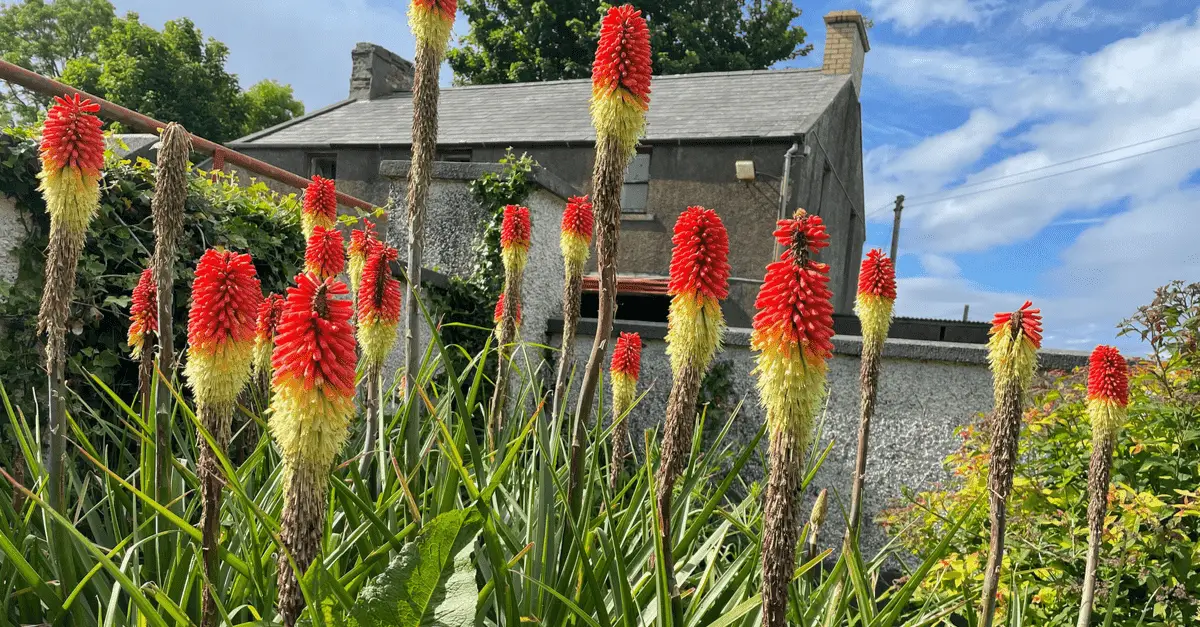
Scientifically known as Kniphofia, the Red Hot Poker Flower is native to Southern Africa. This unique plant is something of a wonder and is nicknamed due to the large and brightly colored tufts of flowers that make up the head and stand at the top of a long thin stem.
It boasts a vibrant hot red color at the tip of the flowers, which flows from orange to yellow towards the bottom blooms.
The Red Hot Poker Flower will begin to bloom in late springtime. They have a long growing season, making them the perfect choice for filling beds with interest and intrigue.
To prolong the season, make sure to deadhead the flowers that have had their time in preparation and encourage new blooms to grow through.
These exotic plants are tolerant of many soil types except that which is often left boggy, especially during the winter months.
2. Bird Of Paradise
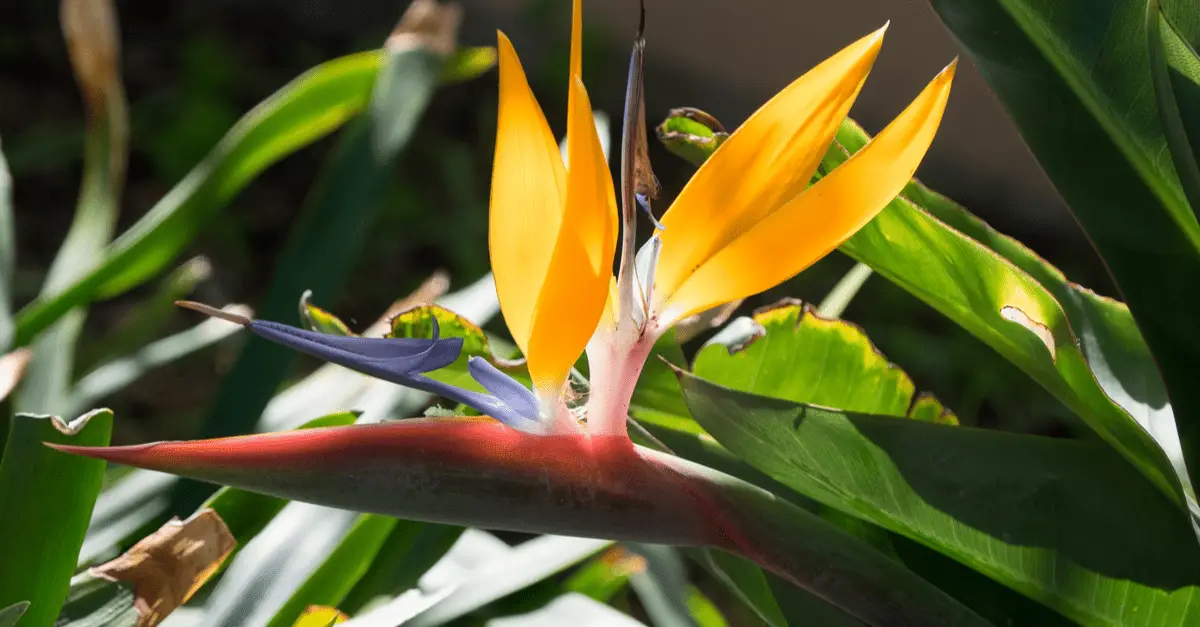
This list would not be complete without the stunning Bird Of Paradise flower that is named because, from a distance, it does look like a tropical bird in flight. It originates in South Africa, where it is more commonly called a Crane Flower.
Typically, the flowers of this plant are bright orange and blue combination; however, there are varieties with white blooms. Both insects and birds pollinate it, so it bears a strong stem.
Every attempt to grow this plant will be well worth it because it has such a fascinating flower. It can be a little fussy, though, so once you’ve popped it in the soil and it begins to grow, you’re in it for the long haul.
It’ll need frequent watering and full sun to thrive. You’ll also need to bring it inside as the fall weather approaches.
3. Shame Plant

Mimosa Pudica, the Sensitive Plant, and the Sleepy Plant are all common names for the Shameplant that is native to Central and South America. It often grows like a weed in tropical areas, but it’s a beneficial herb and an undeniable beauty with violet fiber-optic petals that flourish from the stem.
The most intriguing aspect of this plant is down to its unusual leaves. Firstly, they are fern-like, but most notably, when tickled at the end, fold closed one pair at a time for a few minutes before reopening.
To grow the Shade Plant in your yard is very simple. They like warm temperatures between 60-85 degrees and plenty of bright light, but not necessarily direct sunlight. They prefer consistently moist soil but don’t confuse this with boggy, or its roots will soon start to rot.
4. Orchid
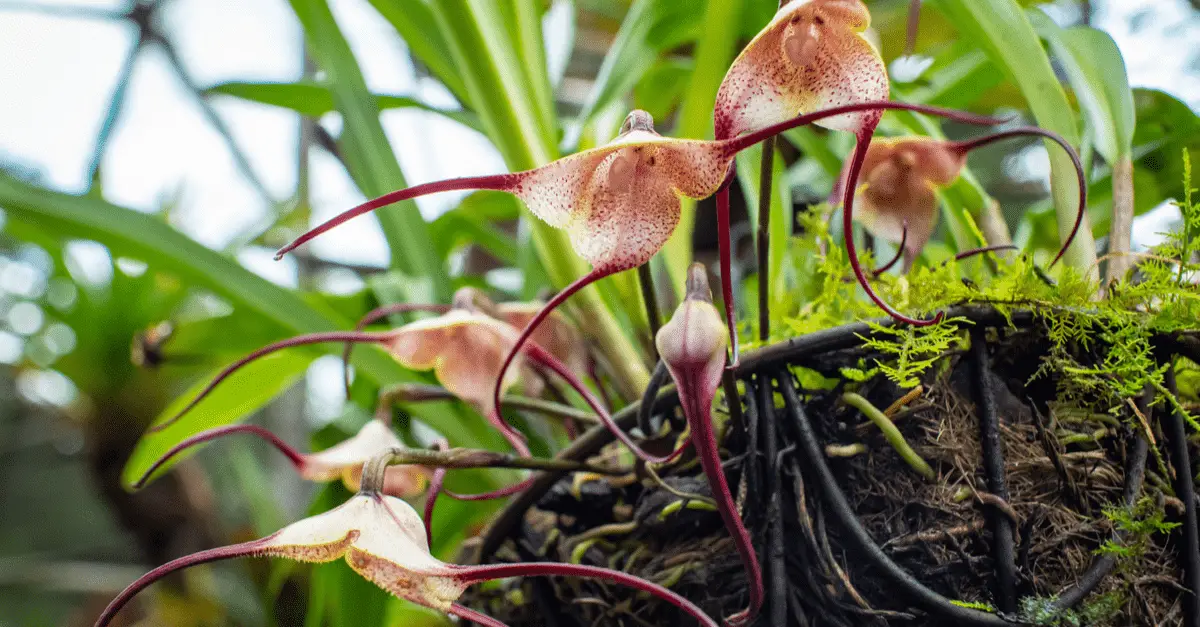
An exotic plant list would not be complete without the delicate orchid. Although they now grow on every continent – except Antarctica – they are thought to originate in China.
With over 25,000 species to choose from, everybody has a variety. If you want the most exotic and unusual, consider acquiring the Monkey Face Orchid or the Flying Duck, which are as amusing as fascinating.
There are so many types of orchids whose growing conditions differ that you’ll need to read about the kind that suits you, but most need dryer roots with plenty of aeration. Heavy watering less often suits them better unless you’re in a humid location, which means they’ll be able to absorb moisture from the air.
In cooler climates, orchids need a place within homes or greenhouses on bright windowsills where the temperature is warmer and more consistent.
5. Blue Passion Flower
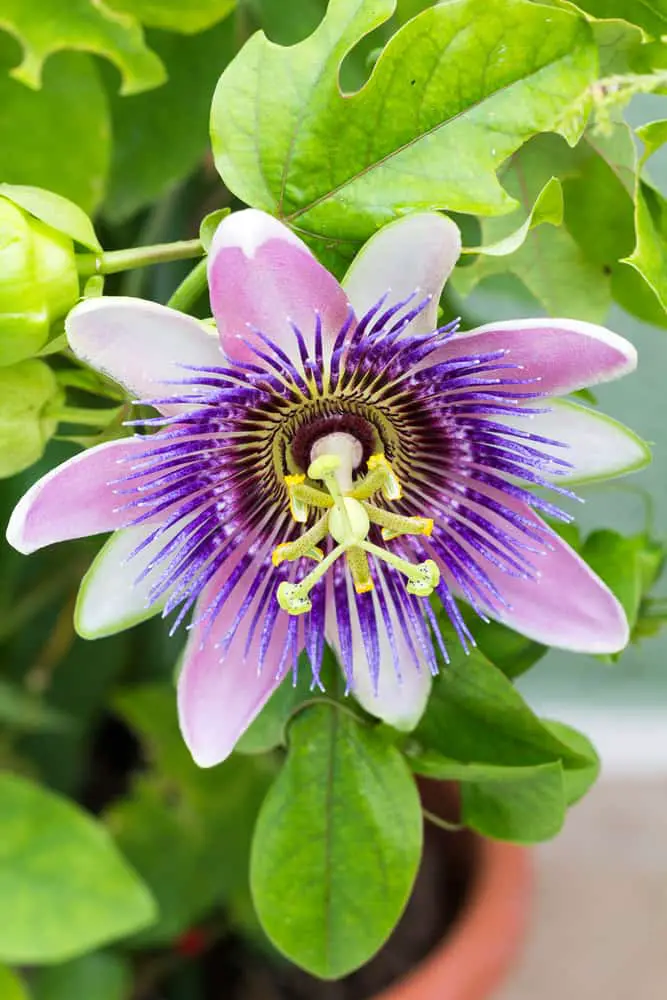
The Blue Passion Flower is like a shining star amongst its green foliage. The bonus of this plant is that during the summer months, it will produce its treasure – passionfruit. Although, be careful not to consume underripe passion fruit or the plants’ leaves because the chemicals inside turn into cyanide when ingested.
Passionflower is a vigorous grower and will quickly cover a wall or fence if the conditions are right. It has a vine-like structure with tendrils that help the plant cling onto anything it can to reach new heights. It should thrive as long as your plant is in a sunny, warm spot with well-drained soil.
The Blue Passionflower doesn’t need pruning; however, cutting it back and deadheading will keep the plant looking neater. Despite its tropical look, this plant should survive the winter, as long as you apply plenty of mulch. Shoots will remerge come spring.
6. Frangipani
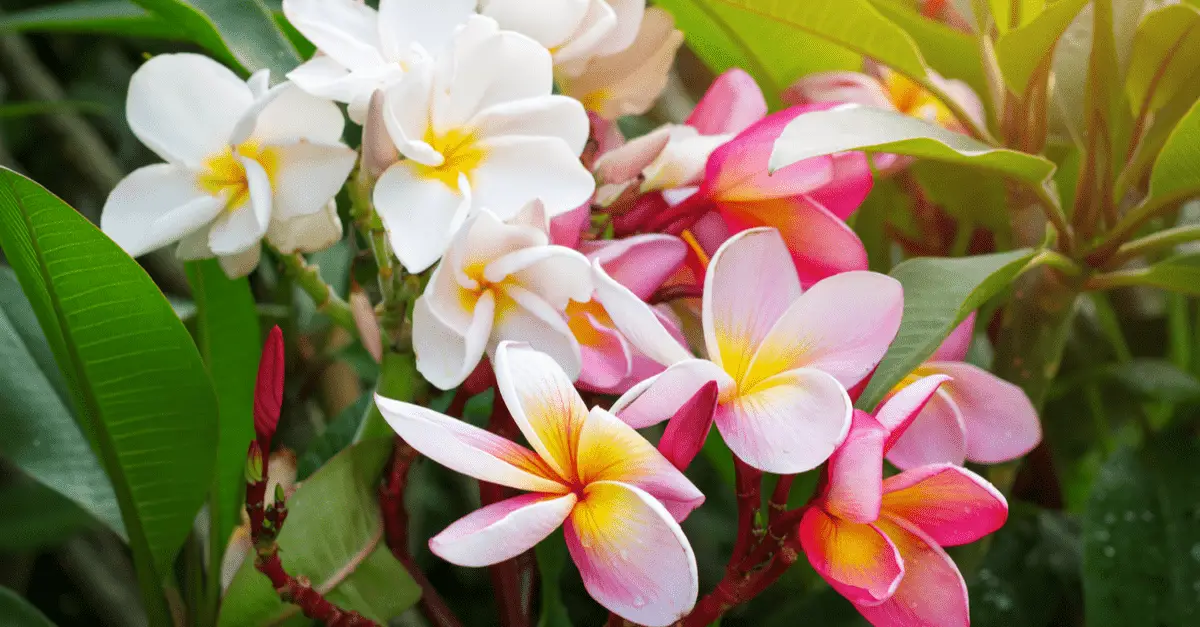
Frangipanis come in many colors, including white, pink and red, but whatever their shade, they’re gorgeous! It has five thick petals that have different colored centers. The flowers on this plant smell divine but don’t actually contain any nectar, thus fooling insects into coming and pollinating it.
Although these small trees are commonly associated with Hawaii or the South Pacific, they are native to Central and South America, although they now grow across the globe.
Because of the origins of this plant, it is a sun and heat worshipper and needs those conditions to thrive. If you live in a more temperate climate, you could use a greenhouse or conservatory to bring a slice of exotic to your patch.
Frangipani is also easy to propagate. In the spring, cut off a thick stem and let it dry out. Then put it in some rich fertilizer and water minimally.
